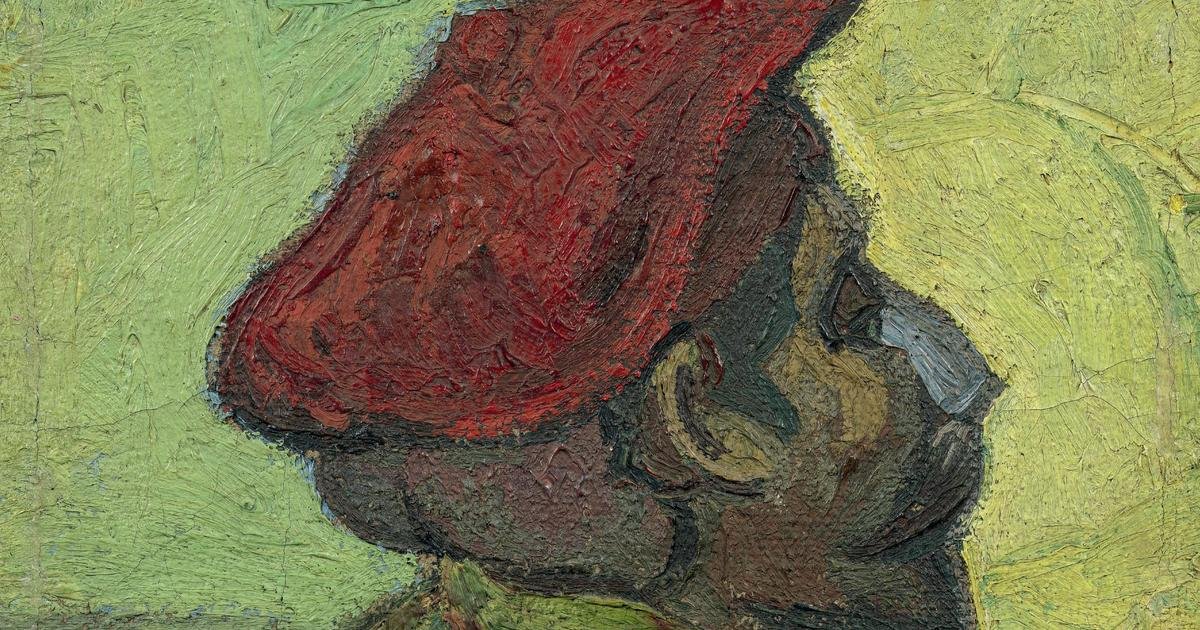FIGARO SPECIAL EDITION (6/10) – Gauguin left Brittany and headed for Arles; Here two men will weigh themselves, confronting each other to the point of tragedy.
This article is taken from: Figaro Special Issue Van Gogh, Farewell SymphonyA special issue published on the occasion of the exhibition at the Musée d’Orsay Van Gogh, The Last DaysTracing the artist’s life and work from his Dutch youth to his tragic end in Auvers sur Oise.
Finally happy! Vincent sits in the Café de l’Alcazar, quietly smoking his pipe. After months of hard work, Vincent is resting. Beware. Vincent is happy! Gauguin eventually decided to leave Brittany to study with her. Will the Atelier du Midi come to light and welcome in the Arles sun the avant-garde artists that Vincent dreamed of bringing together there? So they create together.
On October 23, 1888, Gauguin arrived. Gauguin knocks on the door of the yellow house. Vincent hurriedly places her in the room he reserved and decorated for her. Vincent shows him around the house. Gauguin takes a look. Then he looks thoughtfully at the chalk words Vincent has drawn on one of the walls: “ I am the Holy Spirit. I am sane. » Thoughtful Gauguin follows Vincent, who shows him his paintings. Gauguin’s silence.
While Vincent is easily excited about another artist’s work, Gauguin is distant and critical.
This former stockbroker, who, at the age of forty, abandoned his wife, family and career, is no longer a late impressionist imitating the landscapes of Camille Pissarro and the views of Mary Cassatt’s little girls. He had already found his way in Brittany, where he presided over a small colony of artists of a lesser rank than himself. His passion is Wagnerian. He thinks in terms of large didactic and decorative cycles. He dreams of creating a holistic work that encompasses architecture, painting and sculpture. To do this, Gauguin managed to simplify shapes and contours. He does not hesitate to paint large areas in intense tones. He believes that a painting can create a much stronger impression if modeling is abandoned in favor of bold schematization.
Also read Figaro Special Edition editorial: “Farewell Symphony”
Gauguin, confident, authoritarian, commanding. Vincent was worried and in pain. Two opposite characters. But both passionately share the same desire: to go beyond the eye, to give painting a symbolic, spiritual resonance that impressionism does not offer.
In the following days, Gauguin took matters into his own hands. He organizes everything. He’s the one who cooks. He even decides how much money they will spend to go to the brothel. Vincent allows this to happen. Now. The two artists set up their easels in front of the same motifs. Vincent executes Red Vine (The only painting Van Gogh sold during his lifetime). Gauguin’s response is as follows: harvest in Arles. Vincent continues: Alyscamps And Portrait of Mme Ginoux, a native of Arles, his landlady. With Gauguin’s encouragement, he painted from memory. Memory of the garden in Etten. At the end of November, Vincent painted portraits of the Roulin postman and his family.
Vincent copies a drawing by Gauguin. Gauguin creates a painting in which Vincent paints sunflowers. Two men arguing, arguing. For everything, for everything. Tension is rising. It’s impossible for Vincent to talk to her without flying into a violent rage. Gauguin plans to leave Arles. Vincent surpasses him.
December 23, 1888. Gauguin has just had dinner. Alone. Tired, he goes to bed. Suddenly he hears someone running behind him. It’s changing. Vincent is three feet away from him. He’s brandishing a razor. Gauguin looks at Vincent. Vincent lowers his gun hand. He turns around, runs, runs all the way to the yellow house.
Being careful, Gauguin decides to go to the hotel and sleep. However, at the same time, a drama is happening in the yellow house. Vincent cuts off his left ear to punish himself. The rest is told to us on the Republican Forum: “ Last Sunday at 11.30 in the evening, a man named Vincent Van Gogh, originally a Dutch painter, showed up at the brothel No. 1, asked about the woman named Rachel and, giving her his ear, said: “Hide this object carefully.” Then he disappeared. The police, who were informed that this fact could only belong to a poor madman, went to this person, whom he found lying in his bed with almost no signs of life, the next morning. This unfortunate man was urgently taken to a nursing home. »
The name of the painter Van Gogh is mentioned in the press for the first time.
“Van Gogh, Farewell Symphony” 164 pages, €13.90, available on newsstands and websites Figaro Store .


